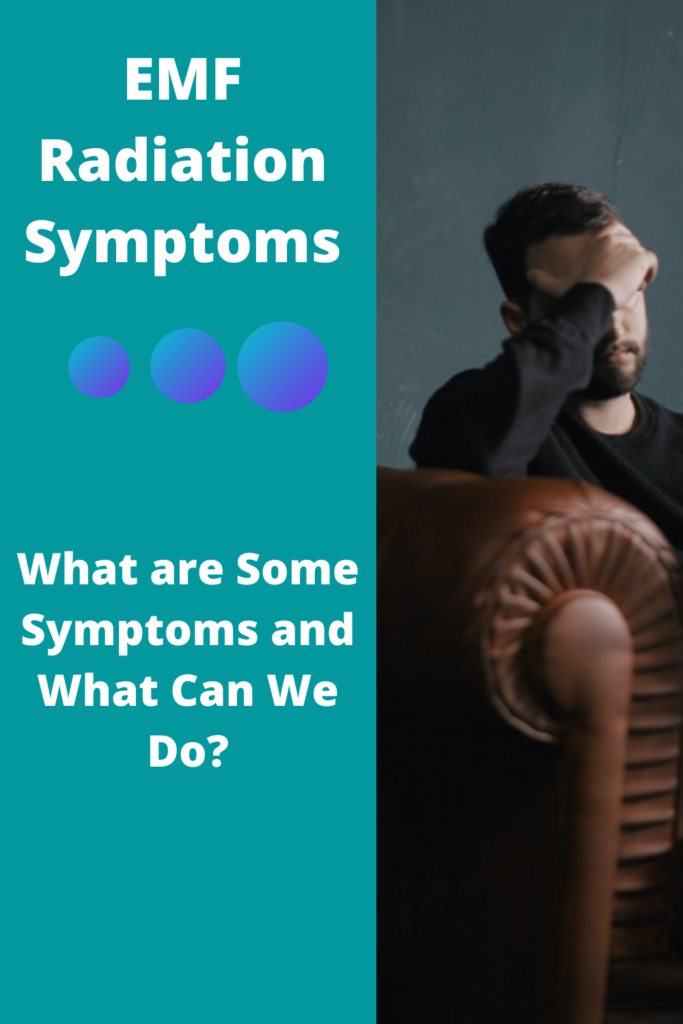Wellness Effects of EMF Radiation

RF-EMF radiation can cause DNA damage, tissue heating, and can disrupt the blood-brain-barrier. These effects are real, and ARPANSA is active in collaborating in discussions with EHS communities, medical specialists, and researchers. ARPANSA will continue to study research related to the health effects caused by EMF radiation.
RF-EMF causes DNA damage
Exposure to man-made electromagnetic fields (EMFs) is associated with DNA damage, as well as other negative health consequences. EMFs can alter the intracellular ionic concentrations that are crucial to maintain the electrochemical balance of cells. It can also cause disruption to cell homeostasis and result damages to the DNA. Additionally exposure to EMFs is also associated with the production of free radicals as well as reactive oxygen species (ROS).
The exposure to radiation from RF-EMF has been associated with changes in male germ cells' development. This is due to the development of germ cells into spermatozoa, aswell as functional maturation as the spermatozoa travel throughout the epididymis. To determine the sensitivity of RF-EMF exposure to the development of male germ cells A specially designed waveguide machine was constructed for the exposure of unrestrained mice to RF-EMF with a dose of 2.2 W/kg.
In a recent study researchers have discovered that exposure to RF-EME triggered an oxidative DNA damage to the spermatozoa. Sperm DNA fragmentation increased by 18% after one week of treatment and by 23 percent after five weeks. Furthermore, DNA damage in mitochondria was observed by measuring the level of a biomarker, 8-hydroxy-2-deoxyguanosine (8-OH-dG).
Despite this it isn't yet considered a carcinogen. However, several studies have revealed that RF-EMF exposure can impair DNA health in range of cell lines. In one study, scientists exposed Vero cell lines to EMF at 100 Hz over 45 minutes. is emf radiation harmful evaluated DNA damage within 48 hours of exposure to determine if exposure affected the integrity of DNA.
The RF-EMF effect causes the heating of tissues
While the effects of RF-EMF are generally considered to be thermal, a few studies have demonstrated that non-thermal effects may also be present. These factors could be responsible for some of the unresolved observations in the epidemiological study of EMF hypersensitivity. It is therefore important to consider the non-thermal effects when conducting an exhaustive review.
The non-thermal effects of the RF-EMF can occur on the cell's membrane. This is an area where research has been extensively examined. Particularly the electrochemical behavior of cell membranes has been investigated. The current understanding is that RF-EMF energy higher than 1 MHz gets transferred into the tissues through dielectric dissipation and ionic discharge. The theoretical studies have indicated that the energy transferred to tissues could be as high as 200 kV/m.
The electrical properties of tissues are controlled in the form and quantity of water molecules and ions, and other molecules within the body. This determines how well absorbed EMR from RF is absorbed by different tissues. Organs with greater conductivity are likely to absorb more of the EMR field and produce more of an effect. This is the reason the degree of heating in tissues does not increase steadily as it moves from the exterior to the body and is only noticeable in hot areas. Bone and fatty tissues are less susceptible to heating by RF than other tissues because they are not as water-based. content.
The intensity of the field's penetration is determined by the strength and frequency of the field. Muscle tissue is more able to absorb field energies than the other tissue, and converts it to heat more efficiently. Typically the penetration depth that RFEMF has is measured as millimeters (mm). However, the greater the frequency, the deeper the penetration.
RF-EMF causes blood-brain barrier disruption
Researchers have found that RF EMF can disrupt the blood-brain barrier which can alter sleep patterns and neurotransmitter levels. In addition, the effects that EMF on brain activity are linked to neurodegenerative diseases. For example, EMF from mobile phones can alter electroencephalogram activity as well as sleep patterns, and the activities of nitric oxide and xanthin oxide.
https://note1s.com/notes/RZ96C62 at the Vienna University have studied the effects of RF-EMF exposure on brain cells. They also studied the effects of ELF EMF on the brain system. Although the cellular mechanisms aren't completely known but there is a clear connection between exposure to ELF-EMF and depletion of myelin. This relationship might account for the electro-hypersensitivity symptoms of electro-hypersensitivity. There are, however, proven methods for regenerating myelin inside the brain.
emf radiation have discovered that exposure to 900 Mhz EMF caused a rise in the permeability of BBB and raised symptoms of neuronal damage in rats. They also observed increased extravasation of albumin into neurons. Furthermore, they discovered that after 30 minutes of 900 MHz exposure 99mTc-MIBI accelerated its penetration to the cerebral cortex. However this effect didn't occur with Evans blue-based injections.

Despite these findings, RF EMF has no clear method for disrupting the BBB. Research suggests that EMF exposure may increase erythrocyte cell membrane permeability, which could alter the BBB and also increase the efflux of calcium ions. Additionally, the presence of a 99mTc-MIBI radiotracer within the brain has also been associated with increased permeability of the BBB.
